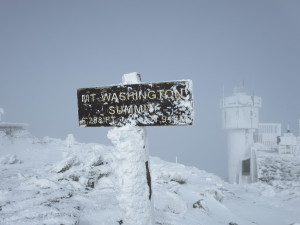The January 2016 issue of Boys’ Life magazine contains an article about a Scout group which attempted to hike to the summit of Mount Washington (NH) during February, 2015. Wisely, on the advice of a park ranger, the group put into place a decision-making process that caused them to turn back prior to reaching the summit due to very challenging weather conditions. “Summit fever” avoided!
 This was a good result, as the Mount Washington hike is commonly stated to be one of the ten most dangerous hikes in the United States, particularly in the winter.
This was a good result, as the Mount Washington hike is commonly stated to be one of the ten most dangerous hikes in the United States, particularly in the winter.
Indeed, a hiker died from exposure the very next day attempting to hike nearby trails, as told in this story, and many others have previously died on Mount Washington.
“Summit fever” is a real decision-making problem, causing normally rational outdoors participants from taking that step back safety-wise, in order to complete the long-sought goal of “reaching the summit”.
However, as has been said, saying that the view from the summit is the only worthwhile view is to diminish the beauty of the other views on the way to the summit, or on the way back down, or to diminish the experience of getting to that point, even if not the summit.
Reference the following real life stories which discuss the effect of “summit fever”:
- http://nederlandliving.com/?p=941
- https://nypost.com/2018/06/04/2-boy-scouts-troop-leaders-in-serious-condition-after-rescue/ (A Boy Scout story)
Also, reference the following articles on how to make those decisions that assist in avoiding “summit fever”
- https://proactiveoutside.wordpress.com/2015/07/16/seven-signs-its-time-to-bail-on-a-summit/
- http://bangordailynews.com/2016/09/01/outdoors/knowing-when-to-turn-back-when-youre-in-the-woods/ (A Boy Scout story)
And, here are several stories regarding the challenges of hiking on Mount Washington:
- http://www.boston.com/bostonglobe/magazine/articles/2008/08/17/a_beautiful_place_to_die/?page=full
- http://www.easternslopes.com/2012/11/25/staying-safe-on-the-edge-of-winter-lessons-from-two-more-deaths-on-mount-washington/
- http://www.pressofatlanticcity.com/communities/absecon_galloway_port-republic/adventurous-boy-scout-troop-members-trek-close-to-the-top/article_c866c4ff-993f-5b0e-9d20-e118a6608bcc.html (A Boy Scout story)
- http://www.outsideonline.com/2081256/why-so-many-people-die-mount-washington
Good lessons all !

And, don’t forget the three major risk factors of GEAR, PEOPLE, and ENVIRONMENT, the single or collective effects of which need to be taken into account when addressing whether reaching “the summit” is a rational outcome!
Importantly, “summit fever” does not necessarily require a “mountain summit” as the ultimate goal.
It can also apply to any activity-end goal that may only be attainable at significant risk and personal cost to the activity participants (be it hiking, swimming, kayaking, canoeing, cross country or downhill skiing), when the “best practice” decision might be to cease the activity short of the originally-intended goal due to issues related to gear, people or the environment, and give your youth a chance to live another day.
